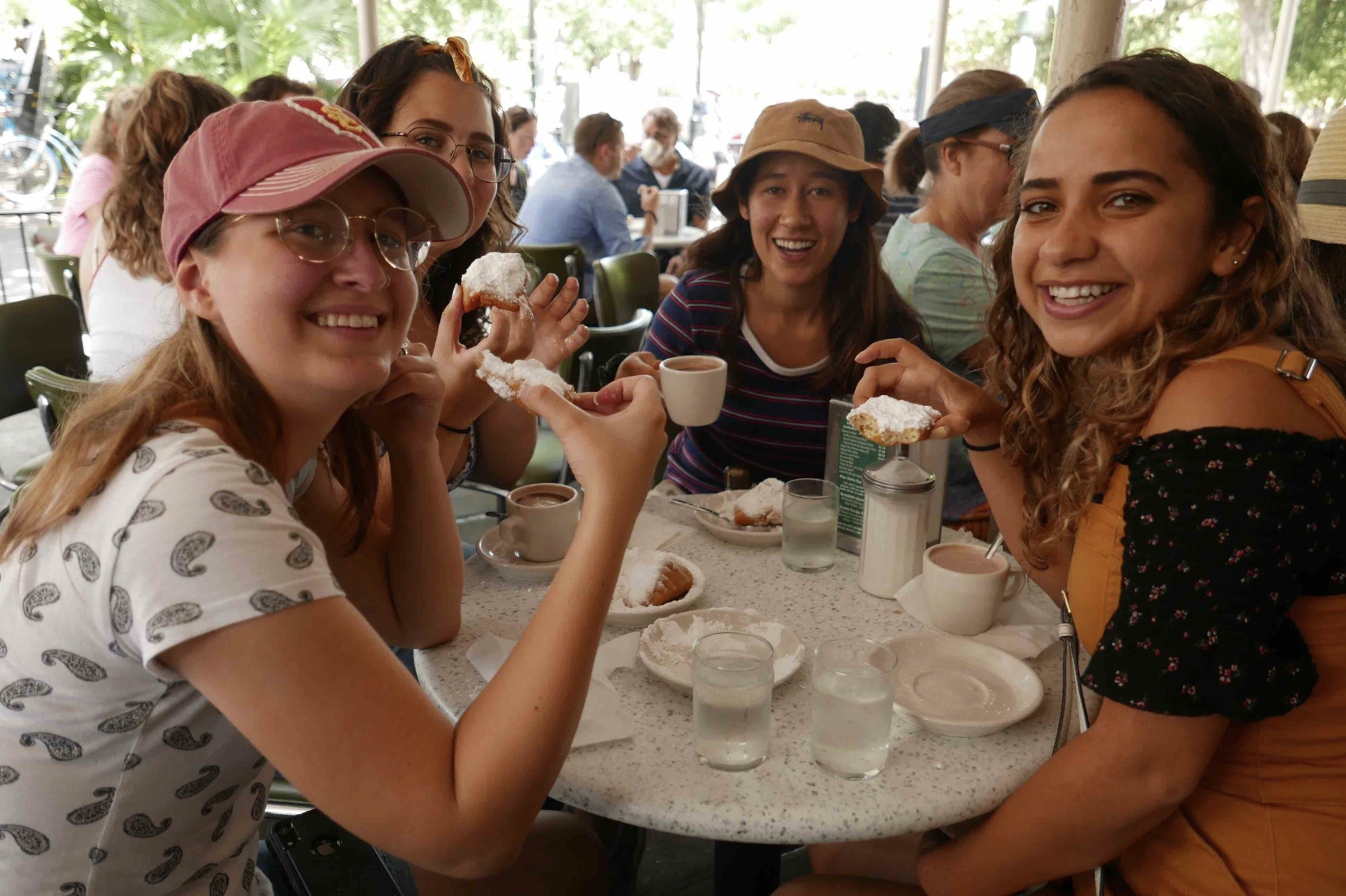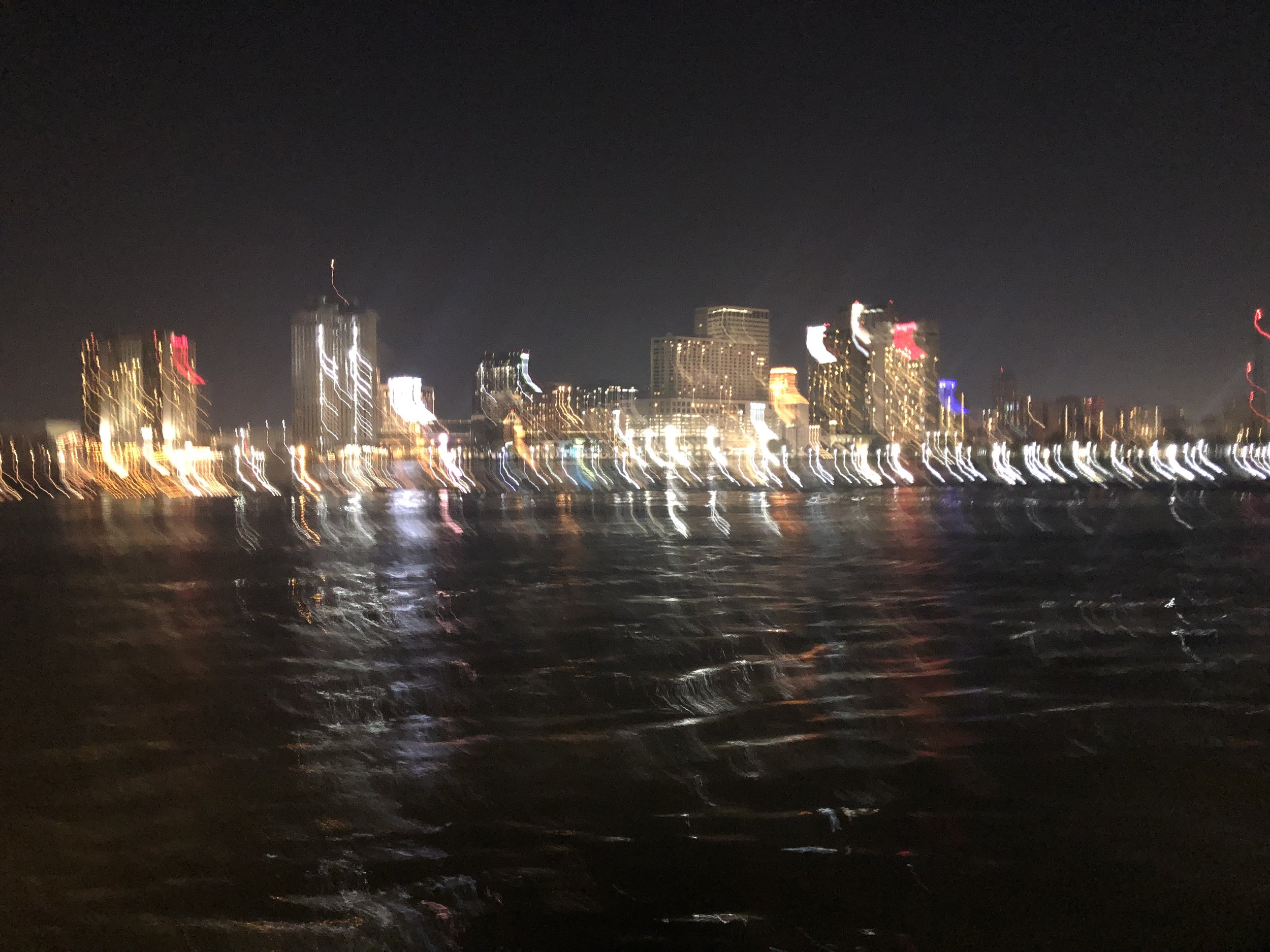“This trip was so beautiful”
I type this from Los Angeles, having arrived and settled back down at home, officially marking the end of our Backpacking Maymester. Between going to school and going to Louisiana, I haven’t been staying at home since early January. It’s the longest that I’ve ever been “on the road.” I would have thought that coming back to my own bedroom after all of this time sleeping elsewhere would be a purely joyful sensation. But now, as I sit in that very bedroom, I find that there’s a lot of sadness mixed up in there that I hadn’t been able to predict.
I’m going to miss being on the road. I’m going to miss being with other people from the moment I wake up until the moment I go to sleep. I’m going to miss reading on quiet beaches or in lively French Quarter coffee shops; I’m going to miss it all.
But nevertheless, as I sit here somewhat contented, I am now able to reflect on the trip, and see what specific lessons it has taught me. I am certain that the Cameryn that came back from Louisiana is not exactly the same to the one who went; she went through unexpected character development and came back a little better. I’m sitting here, in my room, finally home, and I’m backtracking through the course, through each book, each location; and I’m finding that there’s so much I’ve learned.
“miss you guys already :(”
The books we read on this course all took me a bit deeper into the culture that they described and delved into. And I took something from each book—a lesson, big or small, and the appreciation that I have for the memories from this trip will help these lessons to remain engrained in my mind.
But beyond the books were many other lessons that I learned. Like how to prepare dinner for thirteen people, or who Joan of Arc was, and how her legacy continues today. I learned how to use and navigate the streetcar. I learned how to do the Footloose dance from Tara. How to properly hold a baby alligator. How to understand and answer Maria’s riddles. How to talk in an Essex accent. How to get used to the same twelve people being around you for the better part of a day, for twenty six days straight. This last one wasn’t hard at all, perhaps even the easiest lesson to learn.
Oh, and hugs. One of my favorite things that I learned on this trip is that one must get at least eight hugs every day. This lesson came from Tara. By the end of the trip, it had become a practice that I lived by. I’d made twelve friends by this point, and we were with each other every day, so it wasn’t hard to accomplish. This was one of my favorite life lessons that I took back home, because it reminds me of the people I went on this trip with. Reading and seeing the city and learning its history were such incredibly valuable experiences, ones that I will remember and cherish for all of my life, but they would not have been the same had I done it all alone. Surrounded by people who offered countless different perspectives based off of their own backgrounds and beliefs enriched the experience immeasurably. Their connections with the readings enabled further connections of my own, and their interests in certain aspects inspired me to dig deeper as well. When the books were heavy or personally emotional, we were all there for each other. Through the reading, we all became closer, and after twenty six days together, we all departed as good friends.
And I’ll miss getting eight hugs from the gang everyday, now that I’m at my home and they’re all at theirs. But I’ll keep it up. And everyday when I’m keeping track of the amount of hugs I’ve had, I’ll be reminded of where I learned this valuable lesson. This trip has been extraordinary, and I am so grateful for all of the things it taught me.
Swamp Witches™























